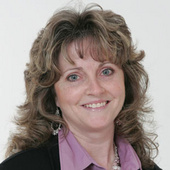A cup of drip brewed coffee has about 115 milligrams of caffeine, an espresso (and percolated coffee) about 80mg, while instant coffee has about 65mg of caffeine. Decaffeinated coffee is not totally caffeine free, containing about 3mg of caffeine. A can of Coca-Cola has about 23mg of caffeine, Pepsi Cola 25mg, Mountain Dew 37mg, and TAB 31mg. Tea has about 40mg of caffeine, while an ounce of chocolate contains about 20mg.
The first Espresso machine was introduced in 1822 by the French, but it was the Italians who later perfected and distributed it.
Coffee business
Coffee is the world's most popular stimulant: 4 out of 5 Americans drink it, consuming more than 400 million cups a day. Consumption in Scandinavian countries is more than 12kg (26lb) per capita. With more than 25 million people employed in the industry, coffee is second only to oil in world trade.
Although coffee is believed to have been grown near the Red Sea since the 7th century, an Arabian author of the 15th century, Shehabeddin Ben, wrote that Ethiopians enjoyed coffee ever since anyone could remember. By the 16th centuries, coffee plants were found throughout the Yemen region of Arabia. After a Turkish ambassador introduced it to the court of Louis XIV in 1669, Europeans quickly acquired a taste for it. A few years later, the Dutch introduced coffee into Java. In 1714, the Frenchman Desclieux planted a single cutting of a coffee tree on the island of Martinique. Plantations soon grew from French Guiana to Brazil and Central America. Today, coffee is planted in moist regions around the world.
Instant coffee was invented in 1906 by Mr. G. Washington, an Englishman living in Guatemala.
Genus Coffea
Coffee is the seed of a cherry from the tree genus Coffea, a tree yielding about 1kg (2lb) of coffee per year. There are more than 25 species of coffee, the 3 main commercial types being Robusta, Liberia and Arabica, the latter representing 70% of total production. It takes 42 coffee beans to make an espresso.
Caffeine increases the power of aspirin and other painkillers, that is why it is found in some medicines. Ironically, caffeine withdrawal also is one of the most common causes of headaches. Women who drink 2 or more cups of coffee a day also have an increased risk of developing osteoporosis. This, however, can be offset by drinking milk or yoghurt to replace the lost calcium. Most studies have found that high caffeine consumption impairs fertility, and taken during pregnancy may cause premature or defected birth.
Caffeine is removed from coffee by treating the green beans with chlorinated hydrocarbon solvents. Instant coffee is prepared by mixing ground and roasted coffee with hot water. The water is then evaporated by spray dryers and high pressure, leaving only the coffee powder. In some coffee products, coffee is replaced with chicory (a wildflower herb), fig, date, malt, or barley, remotely resembling real coffee.
Caffeine is known medically as trimethylxanthine, and the chemical formula is C8H10N4O2.
Cappuccino
The word "cappuccino" comes from the 16th century Capuchin order of friars, whose hoods were called cappuccinos. A cappuccino is a coffee topped with steamed milk.

Comments (1)Subscribe to CommentsComment